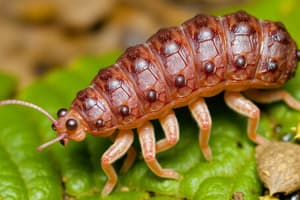Podcast
Questions and Answers
Which type of organism is capable of producing its own food?
Which type of organism is capable of producing its own food?
- Benthos
- Plankton
- Neuston
- Periphyton (correct)
What type of ecosystem is characterized by standing bodies of water?
What type of ecosystem is characterized by standing bodies of water?
- Freshwater ecosystem (correct)
- Lotic ecosystem
- Marine ecosystem
- Coastal ecosystem
Which of the following organisms is an example of plankton?
Which of the following organisms is an example of plankton?
- Snails
- Fungi
- Algae
- Protozoa (correct)
What type of bacteria can use chemical energy for survival?
What type of bacteria can use chemical energy for survival?
What is the characteristic feature of Pleuston organisms?
What is the characteristic feature of Pleuston organisms?
Which term describes organisms thriving at the air-water interface?
Which term describes organisms thriving at the air-water interface?
What is the primary reason why hermatypic corals are also known as hard corals?
What is the primary reason why hermatypic corals are also known as hard corals?
How many species of sea turtles are supported by seagrass beds?
How many species of sea turtles are supported by seagrass beds?
What is the main threat to seagrass ecosystems mentioned in the text?
What is the main threat to seagrass ecosystems mentioned in the text?
Which type of corals are colonial organisms composed of hundreds to hundreds of thousands of individual animals called polyps?
Which type of corals are colonial organisms composed of hundreds to hundreds of thousands of individual animals called polyps?
What is the primary difference between hermatypic and athermatypic corals?
What is the primary difference between hermatypic and athermatypic corals?
Which type of mangrove occupies higher land than red and black mangroves?
Which type of mangrove occupies higher land than red and black mangroves?
Which species of mangrove grows along the edge of the shoreline and has tangled, reddish prop roots?
Which species of mangrove grows along the edge of the shoreline and has tangled, reddish prop roots?
What is the primary threat to the seagrass ecosystem mentioned in the text?
What is the primary threat to the seagrass ecosystem mentioned in the text?
Which part of the marine ecosystem is described as the largest aquatic ecosystem covering over 70% of the Earth's total surface?
Which part of the marine ecosystem is described as the largest aquatic ecosystem covering over 70% of the Earth's total surface?
What is the main source of food for fish, shrimps, crabs, and other marine animals in the mangrove ecosystem?
What is the main source of food for fish, shrimps, crabs, and other marine animals in the mangrove ecosystem?
Which type of mangrove has long horizontal roots and root-like projections known as pneumatophores?
Which type of mangrove has long horizontal roots and root-like projections known as pneumatophores?
Flashcards are hidden until you start studying
Study Notes
Biota and Abiota
- Biota refers to living things
- Abiota refers to non-living things
Autotrophic and Heterotrophic Organisms
- Autotrophic organisms can produce their own food (self-feeding)
- Heterotrophic organisms cannot produce their own food
- Examples of autotrophic organisms: aquatic plants, algae, chemosynthetic bacteria
- Examples of heterotrophic organisms: plankton, neuston, nektos, periphyton, benthos
Plankton and Other Microorganisms
- Plankton: a diverse collection of organisms
- Examples of plankton: cynobacteria, diatoms
- Benthos: live in the bottom sediments, example: snails
- Neuston: microscopic component of pleuston
- Periphyton: film or microscopic organisms that thrive on surfaces of substrates, examples: bacteria, algae, fungi, invertebrates, protozoa
Aquatic Ecosystem
- Aquatic ecosystem: a water-based environment where living organisms interact with physical and chemical features of the environment
- Types of aquatic ecosystems: freshwater, coastal/marine
Freshwater Ecosystem
- Lentic: standing bodies of water or calmed ecosystem
- Lotic: running water or washed ecosystem, examples: springs, streams, rivers
- Freshwater wetlands: where water level fluctuates up and down, examples: marshes, swamps
Marine/Coastal Ecosystem
- Example: seagrass beds, which support 172 species of fish, 46 species of invertebrates, 51 species of seaweeds, 45 species of algal epiphytes, 1 species of sea turtle, and 1 species of dugong
- Threats in the seagrass ecosystem: catchment degradation, pollutants, poor coastal zone management, overfishing, boating
Coral Reef Ecosystem
- Corals belong to the Phylum Cnidaria, class Anthozoa
- Corals are colonial organisms, composed of hundreds to hundreds of thousands of individual animals called polyps
- Zooxanthellae: dinoflagellate symbionts in the tissues of many marine organisms, including corals, jellyfish, and molluscs
- Types of corals: hermatypic (reef-building corals, found only in shallow waters) and athermatypic (non-reef building corals, found in deeper water)
Mangrove Ecosystem
- Mangroves: woody, seed-bearing plants adapted for life in brackish and waterlogged soils
- Classification of mangroves: true mangroves, mangrove associates
- Examples of mangrove species: red mangrove (Rhizophora spp.), white mangrove (Laguncularia spp.), black mangrove (Avicennia spp.)
- Threats in the mangrove ecosystem: land development, pollution, deforestation, climate change, establishment of fishponds for aquaculture
Studying That Suits You
Use AI to generate personalized quizzes and flashcards to suit your learning preferences.




